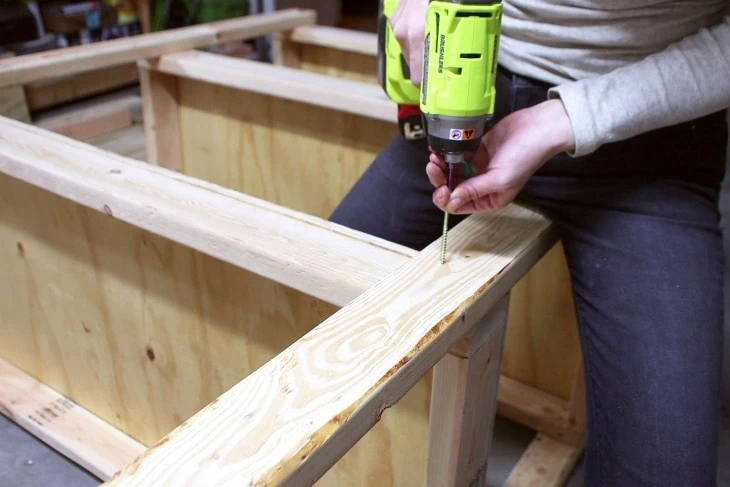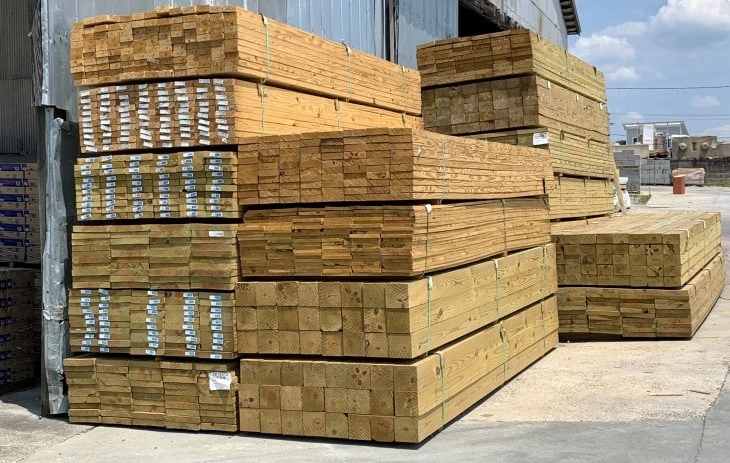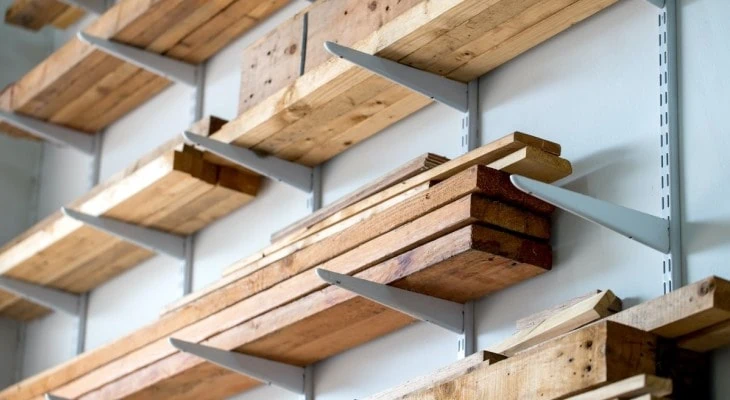How thick should garage shelves be? Do they need additional support? And most importantly, what type of wood should you use to build them?
Making the right choices when building a new garage shelf can prevent a lot of trouble in the long term and reduce hassles in your garage expansion or remodeling process.
Both hardwood and softwood can be used for garage shelves. Hardwood is more suitable for shelves that you plan to load more heavily. Plywood is also a suitable option, especially if you go with CDX. If you’re willing to spend more, you might also want to consider pressure-treated lumber.
Table of Contents
Pine

Pine is one of the best types of softwood you can use for garage shelves. It’s sturdy, relatively inexpensive, and common enough that you should have no problem sourcing it no matter where you live.
If you’re planning to put more weight on your shelves though, you might want to go with a more durable option. This is especially true if you’re going to have any long unsupported sections that will take a heavier load.
Pine will usually not break, but will rather bend over time. This can cause your shelves to sag, which will not only make them unsightly but also impossible to use after a certain point.
Plywood
If you don’t care too much about looks, plywood is a fantastic choice. If you know how to build sturdy garage shelves and provide them with proper support, you can get away with using very thin sheets of plywood, even for heavy duty shelves.
How thick should garage shelves be when using plywood? As long as you don’t space out your support sections too much, you can accomplish some great results with relatively thin pieces.
3/4 should be a good start for most setups. Don’t be afraid to try a thinner version if you think you can support it well enough.
CDX Plywood

CDX plywood in particular is probably the best plywood for garage shelves. It might not look pretty, but it will get the job done better than most other types of wood, and at a significantly lower cost.
The main disadvantage of CDX plywood is that it has more visible manufacturing defects compared to other grades of plywood. But since your shelves will likely be covered by whatever you’re storing on them most of the time, that shouldn’t matter much in most cases.
Plus, it’s not difficult to hide those defects with a quick paint job. Make sure to sand down any physical irregularities before you do that though.
Once you’ve treated your CDX plywood correctly, the differences between it and higher-grade sheets of plywood will be almost negligible. Most people aren’t bothered by the appearance of CDX even if it’s left untreated.
MDF
MDF has a somewhat controversial reputation among professionals when it comes to this type of application. Is MDF OK for garage shelves? That depends on what you want to store on them. For most types of items, it should be fine.
But if there’s any risk of a liquid spilling on your shelves, you should avoid using MDF if possible. One of its main disadvantages is that it doesn’t take well to moisture and can swell a lot if it gets wet. If that’s not a concern for you, then feel free to consider MDF as an option.
Pressure Treated Lumber

Pressure-treated lumber isn’t cheap, but it’s your best choice when you need something you know you can count on. It’s sturdy, looks good, and can last a long time with minimal maintenance. If you have a reliable supplier in your area, definitely see what they have on offer.
For a project as small as a set of garage shelves, paying slightly more for the materials will usually not make a noticeable difference. And it’s a small price to pay for something that will last you many years when treated right.
Closing Thoughts
Choosing between OSB or plywood for garage shelves, and comparing other types of wood in general, can be a tricky task if you’ve never done a project like that before.
Many people prioritize function over form when building something like this. But if you insist on having your shelf look good on top of lasting a long time, this will limit your options somewhat.

